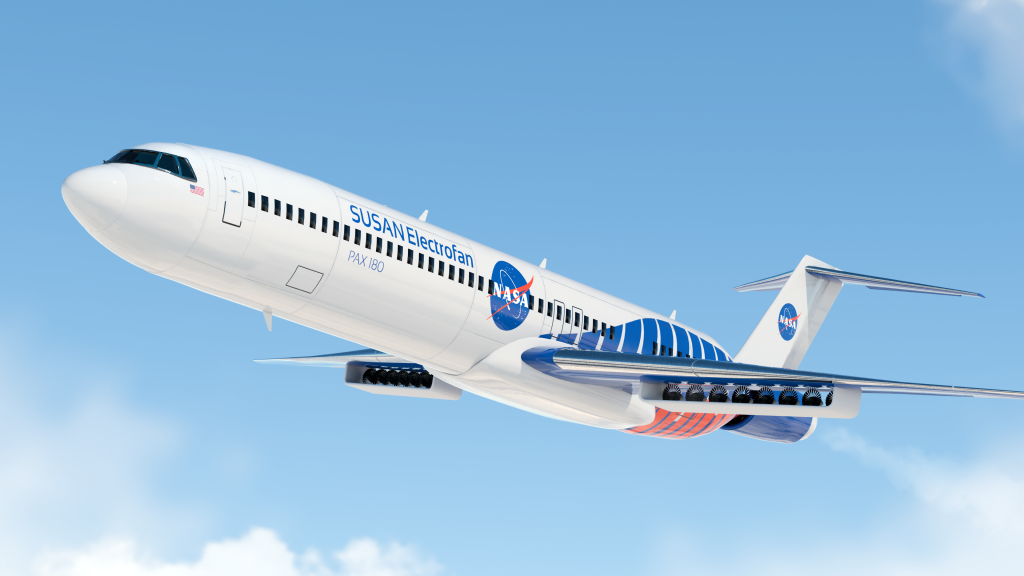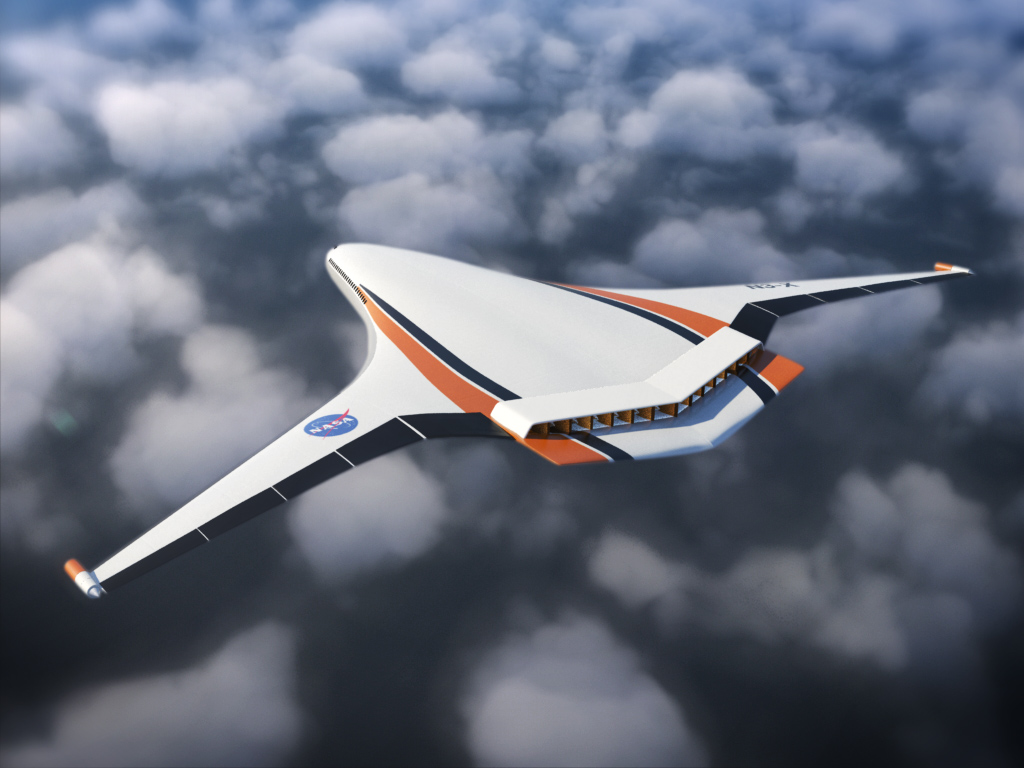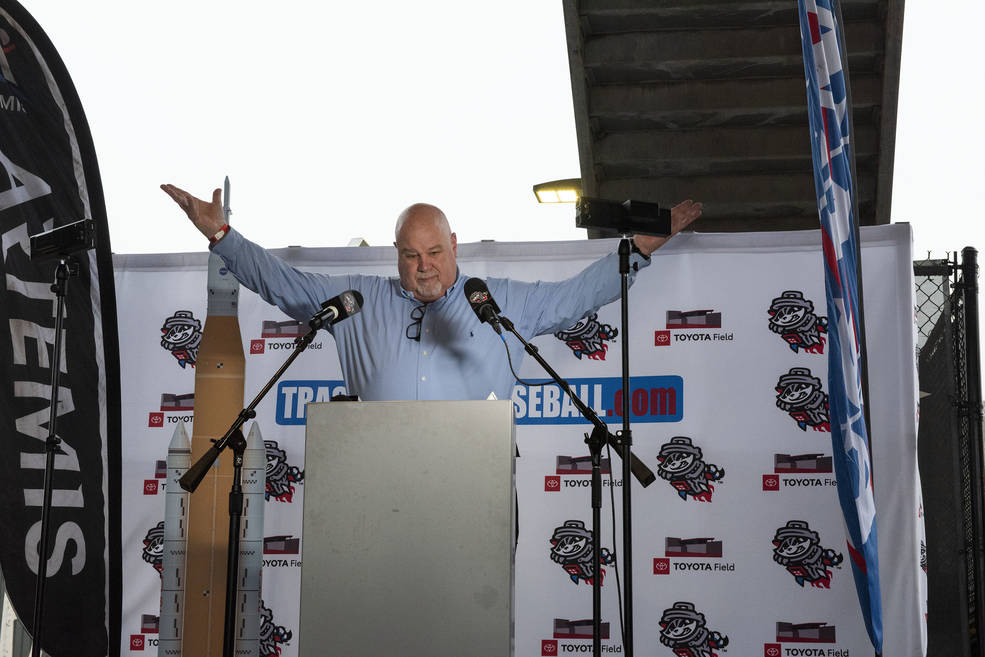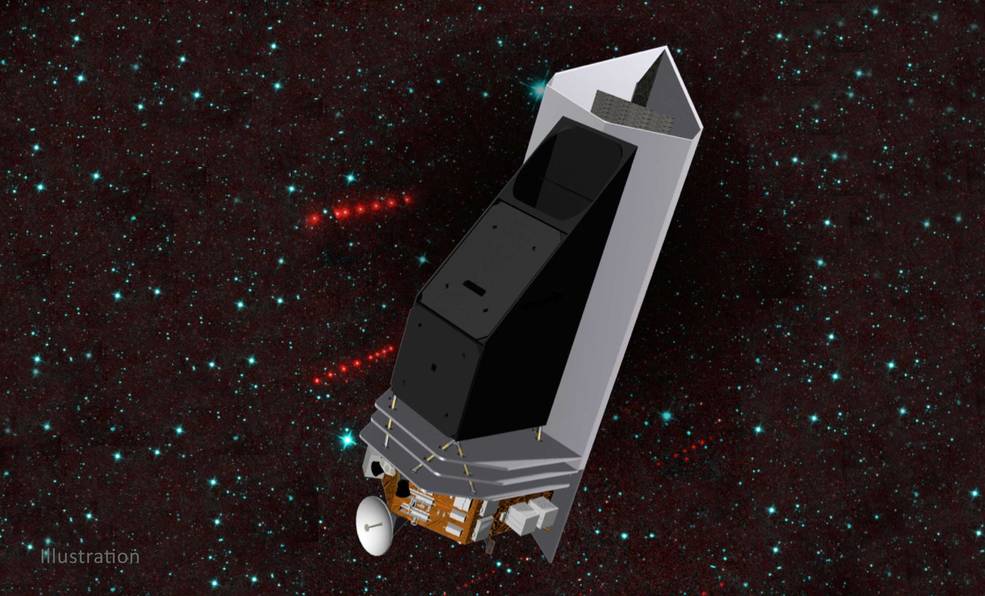The Marshall Star for December 14, 2022.
In This Week’s Star
- Splashdown! NASA’s Orion Returns to Earth After Historic Moon Mission
- Community Celebrates Historic Orion Capsule Splashdown
- 15 Teams Advance in NASA’s $3.5M Break the Ice Lunar Challenge
- Dr. Dwight Mosby Named Deputy Manager of Human Exploration Development & Operations Office
- NASA Commits to Future Artemis Moon Rocket Production
- NASA Awards Safety, Mission Assurance Support Services Contract
- Crew-4 Mission Astronauts Make Debut Visit to Marshall
- IXPE Celebrates One Year of Exploring the Cosmos
- Col. Cozine to Speak to Marshall Association Dec. 15
- 50 States: Solid Rocket Motors
- NASA’s NEO Surveyor Successfully Passes Key Milestone
Splashdown! NASA’s Orion Returns to Earth After Historic Moon Mission
NASA’s Orion spacecraft splashed down in the Pacific Ocean, west of Baja, California, at 11:40 a.m. CST on Dec. 11 after a record-breaking mission. Orion traveled more than 1.4 million miles on a path around the Moon before returning safely to Earth, completing the Artemis I flight test.
Splashdown is the final milestone of the Artemis I mission that began with a successful liftoff of NASA’s Space Launch System (SLS) rocket Nov. 16, from Launch Pad 39B at NASA’s Kennedy Space Center. Over the course of 25.5 days, NASA tested Orion in the harsh environment of deep space before flying astronauts on Artemis II.
“The splashdown of the Orion spacecraft – which occurred 50 years to the day of the Apollo 17 Moon landing – is the crowning achievement of Artemis I. From the launch of the world’s most powerful rocket to the exceptional journey around the Moon and back to Earth, this flight test is a major step forward in the Artemis Generation of lunar exploration,” said NASA Administrator Bill Nelson. “It wouldn’t be possible without the incredible NASA team. For years, thousands of individuals have poured themselves into this mission, which is inspiring the world to work together to reach untouched cosmic shores. Today is a huge win for NASA, the United States, our international partners, and all of humanity.”
During the mission, Orion performed two lunar flybys, coming within 80 miles of the lunar surface. At its farthest distance during the mission, Orion traveled nearly 270,000 miles from our home planet, more than 1,000 times farther than where the International Space Station orbits Earth, to intentionally stress systems before flying crew.
“With Orion safely returned to Earth we can begin to see our next mission on the horizon which will fly crew to the Moon for the first time as a part of the next era of exploration,” said Jim Free, NASA associate administrator for the Exploration Systems Development Mission Directorate. “This begins our path to a regular cadence of missions and a sustained human presence at the Moon for scientific discovery and to prepare for human missions to Mars.”
Prior to entering the Earth’s atmosphere, the crew module separated from its service module, which is the propulsive powerhouse provided by the European Space Agency. During re-entry, Orion endured temperatures about half as hot as the surface of the Sun at about 5,000 degrees Fahrenheit. Within about 20 minutes, Orion slowed from nearly 25,000 mph to about 20 mph for its parachute-assisted splashdown.
During the flight test, Orion stayed in space longer than any spacecraft designed for astronauts has done without docking to a space station. While in a distant lunar orbit, Orion surpassed the record for distance traveled by a spacecraft designed to carry humans, previously set during Apollo 13.
“Orion has returned from the Moon and is safely back on planet Earth,” said Mike Sarafin, Artemis I mission manager. “With splashdown we have successfully operated Orion in the deep space environment, where it exceeded our expectations, and demonstrated that Orion can withstand the extreme conditions of returning through Earth’s atmosphere from lunar velocities.”
Recovery teams are now working to secure Orion for the journey home. NASA leads the interagency landing and recovery team on the USS Portland, which consists of personnel and assets from the U.S. Department of Defense, including Navy amphibious specialists, Space Force weather specialists, and Air Force specialists, as well as engineers and technicians from NASA Kennedy, the agency’s Johnson Space Center, and Lockheed Martin Space Operations.
In the coming days, Orion will return to shore where technicians will offload the spacecraft and transfer it by truck back to Kennedy. Once at Kennedy, teams will open the hatch and unload several payloads, including Commander Moonikin Campos, the space biology experiments, Snoopy, and the official flight kit. Next, the capsule and its heat shield will undergo testing and analysis over the course of several months.
Artemis I was the first integrated test of NASA’s deep space exploration systems – the Orion spacecraft, SLS rocket, and the supporting ground systems – and was supported by thousands of people around the world, from contractors who built the spacecraft and rocket, and the ground infrastructure needed to launch them, to international and university partners, to small businesses supplying subsystems and components.
Through Artemis missions, NASA will land the first woman and the first person of color on the surface of the Moon, paving the way for a long-term lunar presence and serving as a steppingstone for astronauts on the way to Mars.
Community Celebrates Historic Orion Capsule Splashdown
Jody Singer, director of NASA’s Marshall Space Flight Center, speaks during the Orion Splashdown Party on Dec. 11 at Toyota Field in Madison. The U.S. Space & Rocket Center and Rocket City Trash Pandas hosted the event, which was free and open to the public. NASA’s live feed of the splashdown was displayed on the videoboard. The Orion capsule returned to Earth following a 25.5-day mission around the Moon as part of NASA’s Artemis I mission. The capsule launched Nov. 19 from Kennedy Space Center on a Space Launch System rocket, built and designed by the Marshall team. Space Launch System (SLS) Program Manager John Honeycutt was also among the special guests who addressed the crowd prior to splashdown. Activities included NASA exhibits from Marshall, balloon art, food trucks, and other activities. (NASA/Alyssa Lee)
Space Launch System Program Manager John Honeycutt speaks during the Orion Splashdown Party at Toyota Field. (NASA/Danielle Burleson)
An RS-25 engine is attached to Santa’s sleigh on display at Toyota Field during the Orion Splashdown Party. (NASA/Danielle Burleson)
15 Teams Advance in NASA’s $3.5M Break the Ice Lunar Challenge
NASA has announced the 15 semifinalist teams advancing in the agency’s Break the Ice Lunar Challenge, a multi-level incentive prize competition aimed at advancing technology development for in situ resource utilization on the Moon. Thirteen U.S. teams and two international teams will move on to build and test prototype systems for excavating and transporting icy lunar regolith. The winning U.S. teams will be awarded an equal share of the $500,000 prize purse. The Break the Ice Lunar Challenge is a NASA Centennial Challenge led by NASA’s Marshall Space Flight Center and Kennedy Space Center. Learn more here. (NASA)
Dr. Dwight Mosby Named Deputy Manager of Human Exploration Development & Operations Office
Dr. Dwight Mosby has been named deputy manager of the Human Exploration Development & Operations Office at NASA’s Marshall Space Flight Center.
Mosby will assist in managing and implementing Marshall’s work portfolio in the areas of human exploration and transportation projects; habitation systems; payload and mission operations and integration; and project development and integration for International Space Station payloads, facilities, and environmental control and life support systems.
Mosby previously held a pair of leadership roles within International Space Station payload operations at Marshall since 2020 – the Senior Executive Service position of payload operations cost account manager, as well as manager of the Payload and Mission Operations Division. The Senior Executive Service is the personnel system covering most of the top managerial positions in federal agencies.
Mosby has more than two decades of experience in requirements management, avionics, program management, configuration management, and earned value management in the aerospace industry. Prior to his most recent positions, he was manager of the Operations Directors Office, where he oversaw day-to-day operations of space station payloads and was the single point of authority to the station’s Flight Director’s Office in Houston for all of NASA’s payload operations.
Before joining Marshall in 2019, Mosby held multiple positions with Teledyne Brown Engineering in Huntsville from 2002 to 2018, including manager of space station Training and Crew Operations; program manager for space station Mission Operations and Integration; senior director of Space Mission Operations; and vice president of Space Operations. From 1997 to 2001, Mosby worked for United Space Alliance in Huntsville, where he developed payload training lessons for station crew members and was responsible for developing standard operating procedures for joint station training operations conducted between Marshall and NASA’s Johnson Space Center.
Mosby earned bachelor’s and master’s degrees in physics from Clark Atlanta University and a doctorate in civil engineering from the University of Nebraska in Lincoln. He has been awarded two NASA Group Achievement Awards, three NASA Certificates of Achievements, a Silver Snoopy, a Space Flight Awareness Team Award, a President’s Volunteer Service Award, Marshall Technical Person of the Year in fiscal year 2020, and a Center Director’s Commendation. He also led his contract to win the NASA Office of Small Business Program’s Large Prime Business of the Year and Mentor-Protégé of the Year awards.
A native of Pittsburgh, Mosby and his wife have two sons and reside in Huntsville.
NASA Commits to Future Artemis Moon Rocket Production
NASA has finalized its contract with Boeing of Huntsville for approximately $3.2 billion to continue manufacturing core and upper stages for future Space Launch System (SLS) rockets for Artemis missions to the Moon and beyond.
Under the SLS Stages Production and Evolution Contract action, Boeing will produce SLS core stages for Artemis III and IV, procure critical and long-lead material for the core stages for Artemis V and VI, provide the exploration upper stages (EUS) for Artemis V and VI, as well as tooling and related support and engineering services.
In October 2019, NASA provided initial funding and authorization for Artemis III core stage work and targeted long-lead materials and cost-efficient bulk purchases. The finalization of this contract extends production activities and preparations for future work through July 2028. As part of the contract NASA may order up to 10 core stages and eight exploration upper stages total to support future deep space exploration missions.
“NASA’s Space Launch System rocket is the only rocket capable of sending large cargos and soon, astronauts to the Moon,” said John Honeycutt, SLS Program manager. “The SLS core stage is the backbone of NASA’s Moon rocket, producing more than 2 million pounds of thrust at launch, and the addition of the exploration upper stage will enable NASA to support missions to deep space through the 2030s.”
The SLS Program is managed by NASA’s Marshall Space Flight Center. All the structures for the rocket’s core stage and EUS are manufactured at NASA’s Michoud Assembly Facility.
The SLS rocket delivers propulsion in stages and is designed to evolve to more advanced configurations to power NASA’s deep space missions. Each SLS rocket configuration uses the same 212-foot-tall core stage to produce more than 2 million pounds of thrust to help propel the mega rocket off the launch pad.
For the first three Artemis missions, SLS uses an interim cryogenic propulsion stage with one RL10 engine to send NASA’s Orion spacecraft to the Moon. Beginning with Artemis IV, the SLS Block 1B rocket configuration will be propelled by the more powerful EUS with larger fuel tanks and four RL10 engines to send a crewed Orion and large cargos to the Moon.
The contract comes as NASA optimizes manufacturing capabilities as Boeing will use Kennedy Space Center to perform some core stage assembly and outfitting activities beginning with the Artemis III rocket. In tandem, teams will continue all core stage manufacturing activities at Michoud.
Teams continue to make progress assembling and manufacturing core stages for Artemis II, III, and IV. The Artemis II stage is scheduled to be completed and delivered to Kennedy in 2023. The engine section for Artemis III was recently loaded onto NASA’s Pegasus barge for delivery to Kennedy, where it will be outfitted and later integrated with the rest of the rocket.
With Artemis, NASA will land the first woman and the first person of color on the lunar surface and establish long-term exploration at the Moon in preparation for human missions to Mars. SLS and NASA’s Orion spacecraft, along with the commercial human landing system and the Gateway in orbit around the Moon, are NASA’s backbone for deep space exploration.
NASA Awards Safety, Mission Assurance Support Services Contract
NASA has selected A-P-T Research Inc. of Huntsville to provide safety and mission assurance support services at the agency’s Kennedy Space Center.
The Safety and Mission Assurance Support Services IV contract is a fixed-price level of effort contract, which includes a 20-month base period beginning Feb. 1, 2023, followed by one 24-month option period and one 16-month option period. The potential value of the contract is approximately $67 million, which includes the base plus option periods, as well as an option to add flex hours to cover additional work requirements.
The contract supports NASA programs including exploration ground systems, Launch Services Program, Commercial Crew Program, International Space Station, Space Launch System, and Orion. The scope of the contract includes mission assurance, engineering, and risk assessment and analysis in the disciplines of safety, reliability, and quality.
Crew-4 Mission Astronauts Make Debut Visit to Marshall
By Lance Davis
The Human Exploration Development & Operations Office at NASA’s Marshall Space Flight Center hosted SpaceX Crew-4 astronauts who are part of NASA’s Commercial Crew Program Dec. 8. This was the first post-flight visit from a commercial crew to the center since before the COVID-19 pandemic began.
NASA astronauts Kjell Lindgren, commander; Bob Hines, pilot; and Jessica Watkins, mission specialist; and ESA (European Space Agency) astronaut Samantha Cristoforetti, mission specialist, were part of the agency’s fourth commercial crew mission to the International Space Station, which launched April 27 from Kennedy Space Center and returned Oct. 14, splashing down off the coast of Jacksonville, Florida.
The visit was sponsored by Marshall’s Payload Operations Integration Center, which operates, plans, and coordinates the science experiments onboard the space station 365 days a year, 24 hours a day.
“This is why we fly the space station. It’s for the science,” Lindgren said while speaking to the payload operations team. “That science and research that extend our presence in the solar system make life better back here on Earth and enable us to get to the Moon and then on to Mars.”
During a small ceremony, the Crew-4 astronauts signed and installed their mission patch in the POIC’s control room.
“It’s absolutely well deserved … thanks to every one of you for your contributions” Lindgren said after the mission patch was installed. “We are incredibly grateful to be a part of this team, to be partnered with you all during our missions and to see the work that you all do.
“It’s important to really build community before we fly, and then come home to celebrate you after we fly, to celebrate our successes.”
The crew had plenty of time to interact with flight controllers and other support personnel, including a presentation followed by a question and answer segment, tour stops throughout the POIC, and even a session for photographs and autographs.
“This trip, with the crew visiting us, is such a big milestone for us to get to interact with them,” said Jennifer McMillian, payload operations director at Marshall who was the lead organizer for the Crew-4 visit.
“To me, it’s really a token of appreciation to our folks for all the hard work that they’ve put in so that they get to meet the astronauts, and then for the astronauts to also get to meet the folks that spend countless hours supporting them from the ground,” she said.
Several employees also participated from Marshall’s commercial crew support team, which helped provide oversight to safety standards for the Crew-4 mission’s spacecraft, along with monitoring launch conditions.
“We were super excited to get to participate in this today,” said Lisa McCollum, manager of Marshall’s commercial crew support team. “It means a lot to my team to get to meet a crew that we worked so hard to ensure had safe transportation to and from the space station.”
NASA’s Commercial Crew Program has worked with several American aerospace industry companies to facilitate the development of U.S. human spaceflight systems since 2010. The goal is to have safe, reliable, and cost-effective access to and from the International Space Station and foster commercial access to other potential low-Earth orbit destinations.
NASA selected Boeing and SpaceX in September 2014 to transport crew to the International Space Station from the U.S. These integrated spacecraft, rockets and associated systems will carry up to four astronauts on NASA missions, maintaining a space station crew of seven to maximize time dedicated to scientific research on the orbiting laboratory.
Davis, a public affairs specialist, supports Marshall’s Office of Strategic Analysis & Communications.
IXPE Celebrates One Year of Exploring the Cosmos
By Hannah Maginot
One year ago, NASA’s Imaging X-ray Polarimetry Explorer (IXPE) lit up the early morning sky as it started its journey into space. The satellite was launched on a Falcon 9 rocket from NASA’s Kennedy Space Center on Dec. 9, 2021.
IXPE is the first satellite dedicated to measuring the polarization of X-rays from a variety of cosmic sources, such as black holes and neutron stars. Polarization is a property of light that gives scientists important information about cosmic objects. Before IXPE, X-ray polarization was rarely measured in space. In just one year, IXPE has conducted measurements no telescope has ever been able to make before.
“We are excited to be opening a new window to the universe that was pioneered by Marshall emeritus scientist Martin Weisskopf 50 years ago,” said Amy Walden, IXPE project manager at NASA’s Marshall Space Flight Center.
Here’s a look at some of IXPE’s accomplishments in the first year of its mission:
- IXPE unlocked the secrets of Cassiopeia A, a famous exploded star.
- Findings from IXPE’s observation of neutron star Hercules X-1 surprised scientists.
- IXPE revealed the shape and orientation of hot matter around a black hole.
- Thanks to IXPE, scientists confirmed magnetars are highly polarized.
- NASA’s IXPE helped solve a 40-year mystery around particle acceleration in a blazar, an active black hole that has a jet pointed toward Earth.
IXPE is just getting started. Its baseline mission duration is two years, so with at least one more year of exploration to go, the satellite is poised to make more exciting discoveries about the intricacies of X-ray polarization.
Maginot, a Media Fusion employee, supports Marshall’s Office of Strategic Analysis & Communications.
Col. Cozine to Speak to Marshall Association Dec. 15
Redstone Arsenal Garrison Commander Col. Brian Cozine will be the guest speaker for the Marshall Association Speaker Series on Dec. 15. The meeting begins at 10 a.m. and can be heard via Teams link here. Cozine will provide an update on what the future holds for the arsenal. Cozine is a native of Springfield, Vermont. He was commissioned and branch detailed into the Air Defense Artillery, and then later into the Quartermaster Corps upon graduation from the University of Tampa. His military schooling includes the Air Defense Artillery Basic Officer Course, Quartermaster Transition Course, Theater Logistics Planners Course, the Air Command and Staff Course, the School of Advanced Air and Space Studies, and the Joint Advanced Warfare School. Cozine came to Redstone Arsenal from U.S. Northern Command, where he served as the Future Operations Division Chief in support of Homeland Defense and Defense Support of Civil Authorities. Cozine has won multiple awards, citations and medals including the Defense Superior Service Medal, the Bronze Star, the Meritorious Service Medal with 4 oak leaf clusters, the Army Commendation Medal with 5 oak leaf clusters, the NATO Medal, Presidential Unit Commendation, Joint Meritorious Unit Award, Parachute Badge, Air Assault Badge, and the Rigger’s Badge. For more information on the Marshall Association and how to join, visit their page on Inside Marshall. (U.S. Army)
50 States: Solid Rocket Motors
NASA has several key partners across America that are developing rocket motors to launch the SLS rocket and Orion spacecraft to the Moon. Watch to learn more. (NASA)
NASA’s NEO Surveyor Successfully Passes Key Milestone
Agency officials have completed a rigorous technical and programmatic review, known as Key Decision Point C (KDP-C), and confirmed NASA’s Near-Earth Object Surveyor space telescope (NEO Surveyor) – the next flight mission out of the agency’s Planetary Defense Coordination Office (PDCO) – establishing NASA’s commitment to the mission’s technical, cost, and schedule baseline. The decision commits NASA to a development cost baseline of $1.2 billion and a commitment to be ready for a launch no later than June 2028. The cost and schedule commitments outlined at KDP-C align the NEO Surveyor mission with program management best practices that account for potential technical risks and budgetary uncertainty beyond the development project’s control.
NEO Surveyor is an infrared space telescope designed to help advance NASA’s planetary defense efforts by expediting our ability to discover and characterize at least 90% of the potentially hazardous asteroids and comets that come within 30 million miles of Earth’s orbit, collectively known as near-earth objects, or NEOs. NEO Surveyor’s successful completion of this review furthers NASA’s commitment to planetary defense and the search for NEOs that could one day pose an impact threat to Earth.
The flight mission, which falls under the agency’s Planetary Science Division within the Science Mission directorate, is being developed by NASA’s Jet Propulsion Laboratory, and the survey investigation is led by the University of Arizona. NASA’s Planetary Missions Program Office at Marshall Space Flight Center provides NEO Surveyor program management, and program oversight is provided by the PDCO, which was established in 2016 to manage the agency‘s ongoing efforts in planetary defense.










































